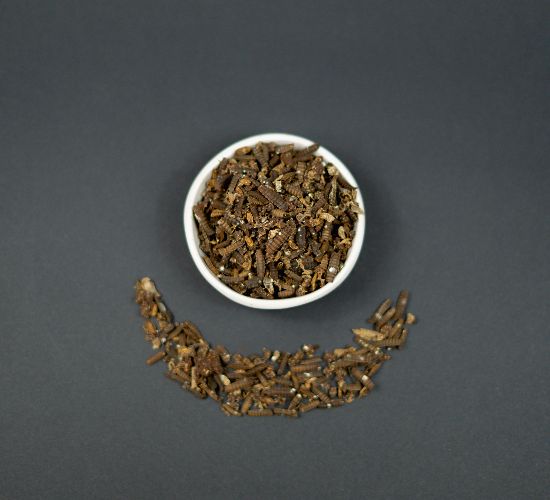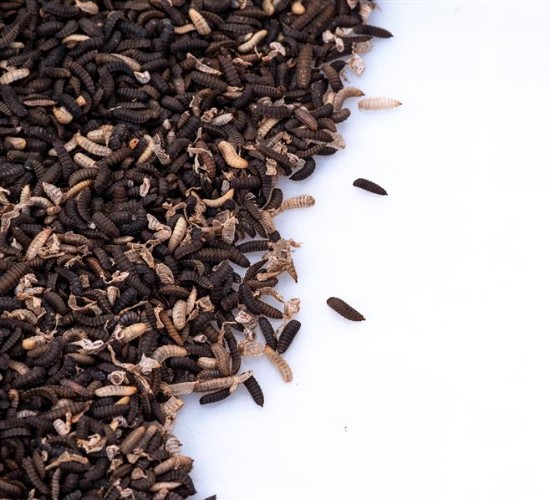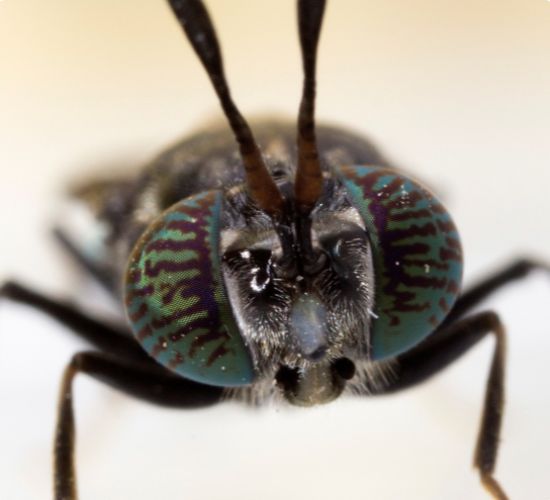Chitin
The exuviae of flies – the casings that the insects leave behind after the final stage of metamorphosis from pupa to adult – are rich in chitin, a structural aminopolysaccharide that can be converted to chitosan through a process of deacetylation.
Antibacterial properties
Chitin and chitosan are known for their antibacterial properties and have been extracted from crustacean shells for many years. However, the sustainability of the process by which they are obtained and the methods of breeding have long been the subject of debate.

Highly sustainable
The extraction of chitin from soldier fly exuviae is very promising, and BEF Biosystems, in collaboration with partner companies and laboratories, is actively working to finetune a truly sustainable extraction process. Chitosan, a safe, versatile and low-allergenic polymer, may then be produced, through a deacetylation process, from the chitin obtained.

Added value
Exuviae are one of the by-products of soldier fly breeding: using them to extract chitin and chitosan means returning a waste product to the value chain. The chitin and chitosan obtained may be used in various fields: agriculture, pharmaceuticals, food and cosmetics.

Are you interested in chitin?
Contact us for all the information you may need.
Newsletter
We have so much for you to learn about.
Sign up for our newsletter

